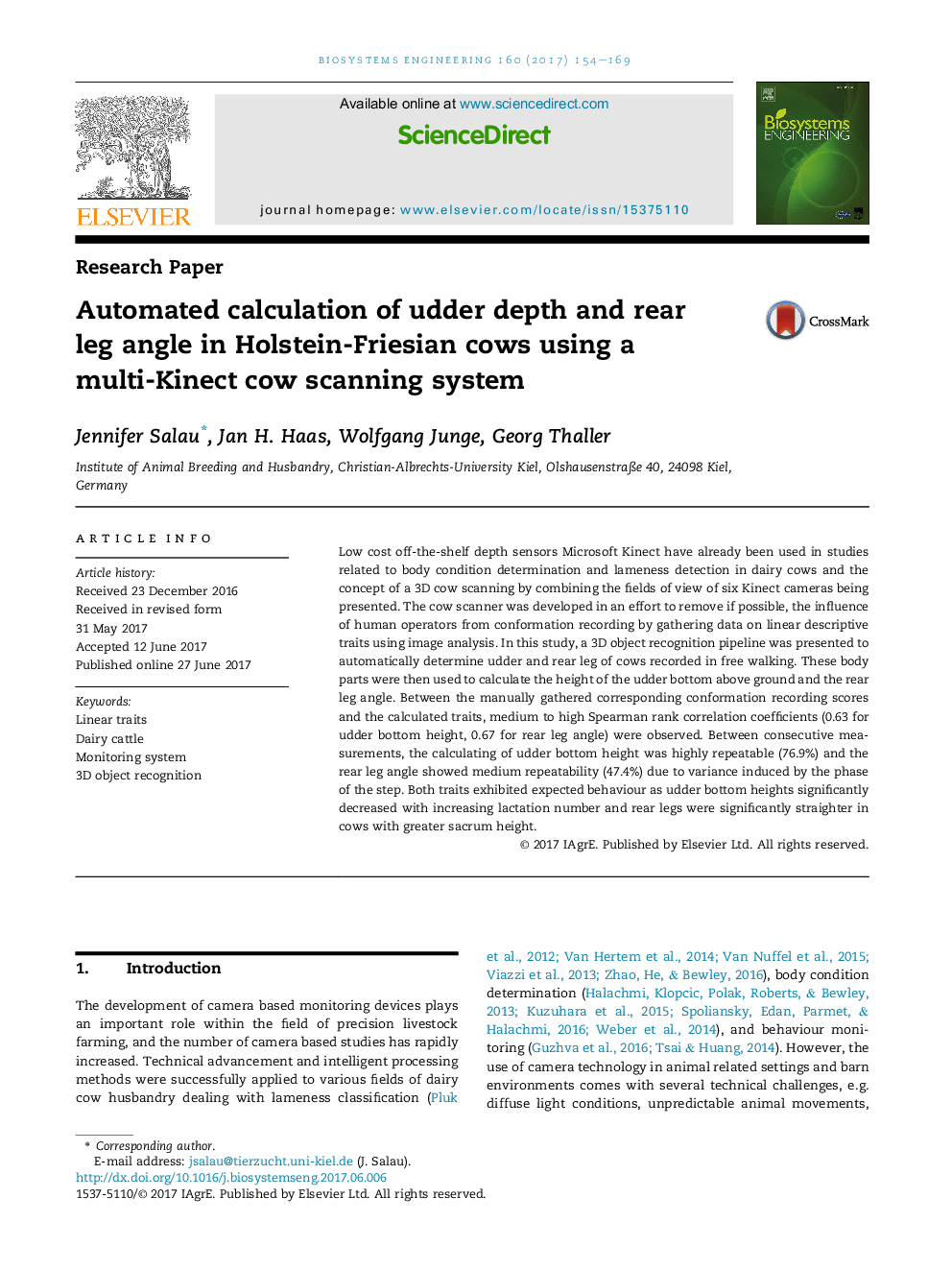| Article ID | Journal | Published Year | Pages | File Type |
|---|---|---|---|---|
| 5471821 | Biosystems Engineering | 2017 | 16 Pages |
Abstract
Low cost off-the-shelf depth sensors Microsoft Kinect have already been used in studies related to body condition determination and lameness detection in dairy cows and the concept of a 3D cow scanning by combining the fields of view of six Kinect cameras being presented. The cow scanner was developed in an effort to remove if possible, the influence of human operators from conformation recording by gathering data on linear descriptive traits using image analysis. In this study, a 3D object recognition pipeline was presented to automatically determine udder and rear leg of cows recorded in free walking. These body parts were then used to calculate the height of the udder bottom above ground and the rear leg angle. Between the manually gathered corresponding conformation recording scores and the calculated traits, medium to high Spearman rank correlation coefficients (0.63 for udder bottom height, 0.67 for rear leg angle) were observed. Between consecutive measurements, the calculating of udder bottom height was highly repeatable (76.9%) and the rear leg angle showed medium repeatability (47.4%) due to variance induced by the phase of the step. Both traits exhibited expected behaviour as udder bottom heights significantly decreased with increasing lactation number and rear legs were significantly straighter in cows with greater sacrum height.
Related Topics
Physical Sciences and Engineering
Engineering
Control and Systems Engineering
Authors
Jennifer Salau, Jan H. Haas, Wolfgang Junge, Georg Thaller,
